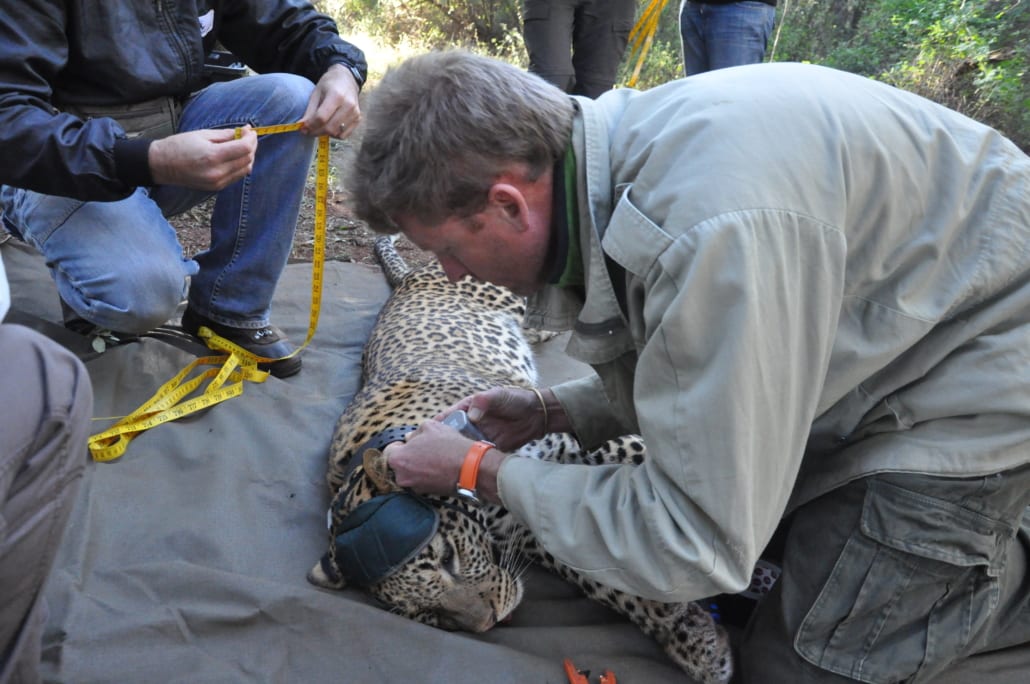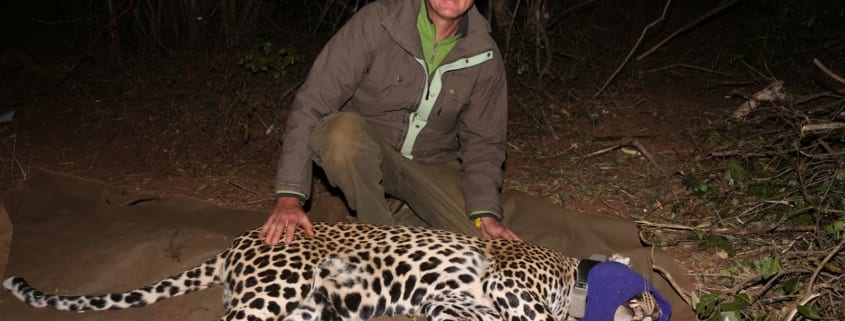Voices from the Rainforest: Oldrich Van Schalkwyk, Conservation Fellow
Rainforest Trust projects thrive thanks to the important conservation work of people on the ground. Our Voices from the Rainforest series brings you news from our projects in Latin America, Africa, Asia and the Pacific — from the perspectives of those working in and for the rainforests.

Conservation and Kinship with Animals
Oldrich Van Schalkwyk was born and raised in Pretoria, South Africa. He joined Endangered Wildlife Trust (EWT) in September 2017 as the manager of the Soutpansberg Protected Area. In his current position, Oldrich is tasked with establishing an inclusive conservation-oriented protected area that offers sustainable livelihood options to local communities. His mandate also includes the protection of threatened wildlife and important ecosystems, many of which are endemic to the western Soutpansberg. Rainforest Trust helped to form the Medike Nature Reserve, which is a part of the Soutpansberg Protected Area.

Oldrich fitting leopard “BB” with a tracking collar. Photo by Endangered Wildlife Trust.
Why did you become a conservationist?
Since I can remember, I’ve always had a love for the natural world. I spend most of my free time in the outdoors. However, from the onset of national television in 1976 in South Africa, it became quite clear to me as a young boy, that our planet was in trouble. It upset me greatly to see documentaries, broadcasted so nonchalantly about logging of tropical jungles or whaling. For instance, it propagated the prosperity which came with the industrial revolution, but with no regard for the amazing species and ecosystems which it destroys. I decided early on that I wanted to live a life which made a difference and stand up for the defenseless, whether man, beast or the habitat we share.
“Being a Fellow allows me to fulfill my dream of living a purpose driven life. Rainforest Trust offers us a great support structure, and allows us to expand and conserve new critically important biodiverse areas.”
Tell me about a time that you felt you had made a difference as a conservationist.
The 17th of September 2008 marks the date on which I first captured a leopard on a trail camera in the Soutpansberg Mountain of South Africa. It was a young territorial female, named CC, due to a unique “cc” pattern on her right flank. I was to closely follow her life over the next four years as she raised her cubs and just do what leopards do, until she was sadly killed in mid July 2012, by a poacher’s snare which caught her around her left front paw. This devastating event made me even more determined to rid the Mountain of snares and lobby for the creation of a large protected area.
About a year after CC’s death, I fitted a satellite collar to her adult son, BB. This allowed us to follow his movements over the next 15 months to give us a better insight into the ecology of these elusive apex predators. Around four months later, we received a call from a neighbouring community informing us that a cattle farmer renting grazing from them wanted to poison a cattle calf carcase. The calf was killed the previous night by a leopard. Fortunately, I had the opportunity to talk to the farmer, and convinced him not to kill the leopard and that we would assist him in fortifying his cattle enclosure.
A camera trap was placed at the enclosure and revealed it was BB who killed the calf. This all took place about a mile south of where his mother was killed. I’m happy to report that BB walked the full term of 450 days with his collar until it automatically dropped off and was retrieved. His data gave us valuable insight into the secret life of leopards in the rugged Soutpansberg. BB is still thriving today as a territorial male on the far western Soutpansberg and EWT has since placed several guardian dogs, protecting the livestock farmers’ animals against any stock losses.
Tell us about a conservation challenge in your job.
In South Africa, it seems that we have less and less federal support in protecting our natural environment. However, I suppose that’s why you have non-governmental organizations (NGOs) and we will continue to fight the good fight alongside other passionate NGOs like Rainforest Trust.
What has surprised you the most in the field?
The dedication of men and woman I share my occupation with. They have to make so many personal sacrifices and sometimes face insurmountable odds, even risking their very lives for the sake of saving a species.
“Humanity’s very existence depends on conservation. We are really saving ourselves. Not just in terms of our livelihoods, through the ecosystem services that our natural environment provides, but it is also for good mental health.”
What is the hardest part of your job?
Over the years I had the privilege to personally get to know the wildlife under my custodianship. For years, I have shared the life of individual animals I research, even feeling a leopard’s heartbeat in the palm of my hand when fitting a satellite collar, or intimately getting to know each rhino’s unique character while guarding them against poachers. Then one day having to stand at the dead body of one of “your” leopards caught in a poacher’s snare or having to witness a gruesome scene of the senseless slaughtering of a rhino. To me, they are more than animals, they are my friends.





